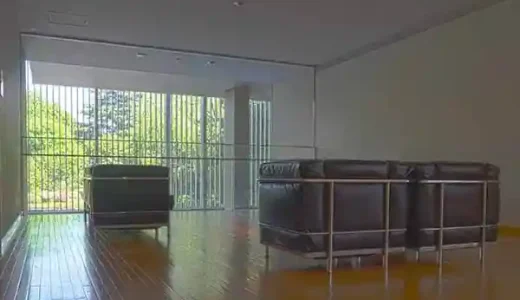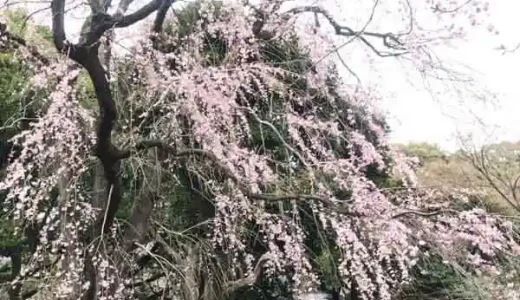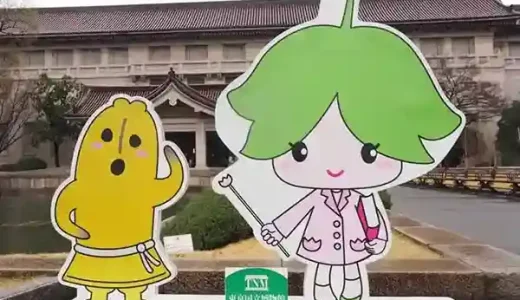In addition to its impressive art and archaeology exhibits, the Tokyo National Museum in Ueno offers a variety of ways to enjoy your visit. I had the chance to relax and take a break at the museum, and I hope you will also be able to find a place to relax and enjoy your time there.
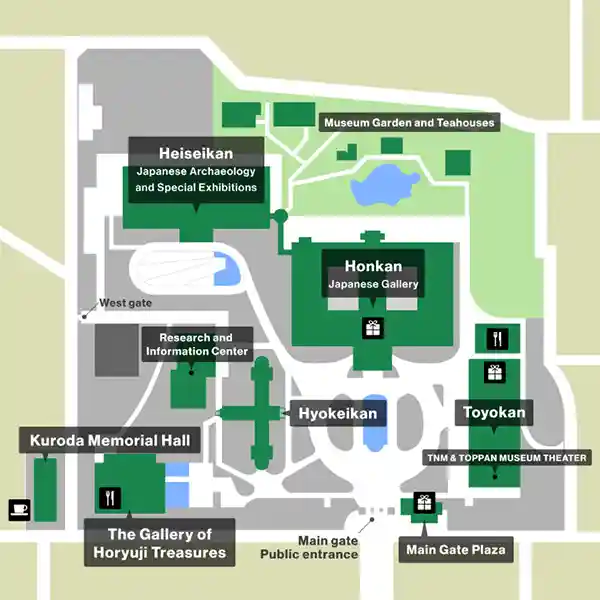
Outdoor Resting Area
The Tokyo National Museum has various outdoor resting areas.
Honkan
Upon entering the main gate, I noticed the Honkan building directly in front of me. The Honkan offers visitors the opportunity to view Japanese paintings, sculptures, crafts, and calligraphy.
Benches Located in Front of the Honkan
A row of wooden benches was situated under a large Liriodendron tulipifera tree in front of the Honkan. This tree is a symbol of the museum. Many visitors took the opportunity to relax and have lunch on the benches while enjoying the warm sunlight.
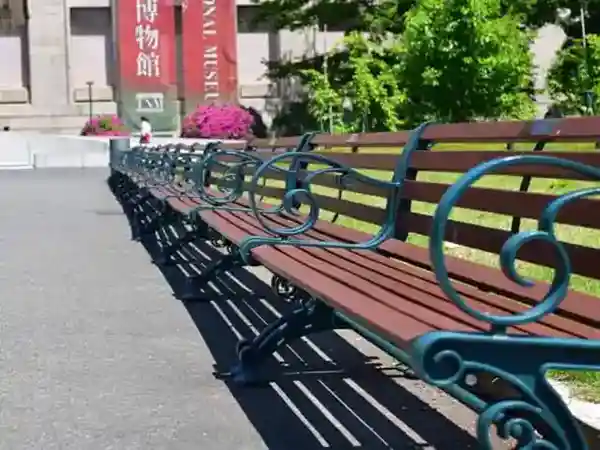
Toyokan
The Toyokan can be found on the right side of the main entrance. It houses art and artifacts from various regions, including China, Korea, Southeast Asia, Central Asia, India, and Egypt.
Tables Located under the Eaves of the Toyokan
The Toyokan, located in front of the Honkan and facing the plaza, has a large veranda with tables and chairs set up underneath. The veranda provides shade, which attracts some people to work on their computers at these tables.
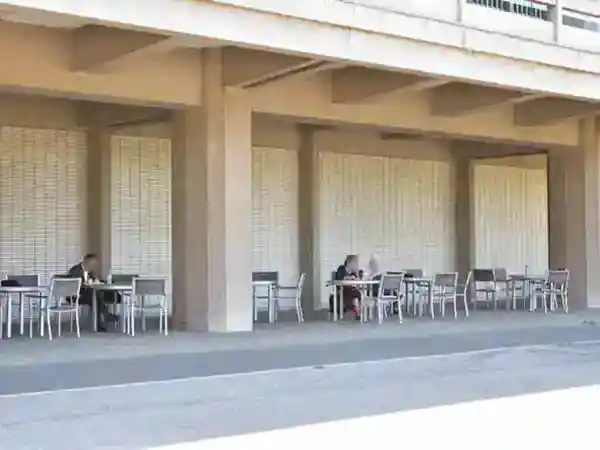
Hyokeikan
The Hyokeikan was constructed in 1909 in celebration of the wedding of Crown Prince Yoshihito and Sadako Kujo (later Emperor Taisho and Empress Teimei). At this time, the Hyokeikan is not open to the public except for special exhibitions.
Benches Located in Front of the Hyokeikan
In front of the Hyokeikan, there was another row of wooden benches. A few visitors were reading on one of these benches, which was located near the Honkan and provided shade from a Liriodendron tulipifera tree.
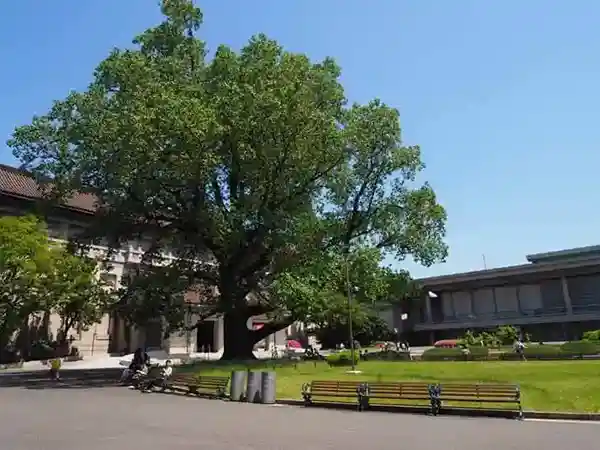
Tables Located to the Left of the Main Gate
After entering the main gate and turning left, I saw a row of white tables and chairs. A couple enjoyed food and drinks purchased from an outdoor vendor, creating a pleasant atmosphere.
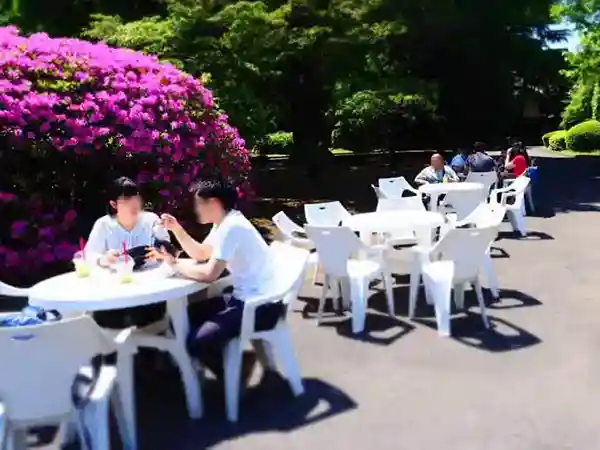
Resting Area Located Inside the Museum
Honkan (Japanese Gallery)
Conservation and Restoration Space
Tables and chairs were arranged on the north side of the “Art of Modern Times” gallery at the Honkan. The soft lighting in the room created a peaceful atmosphere.
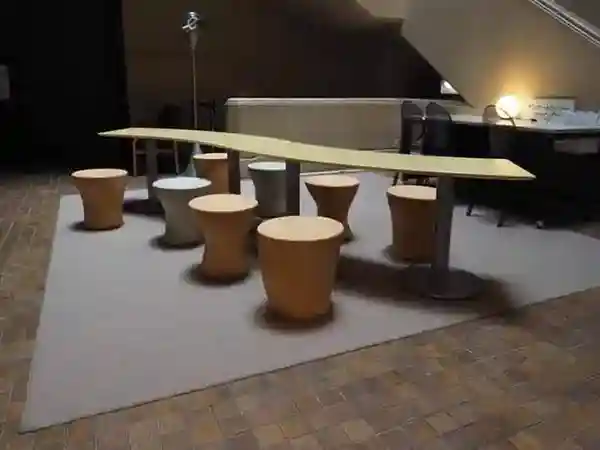
Corridor Connecting the Honkan and the Heiseikan
A rest area can be found in the corridor connecting Honkan and the Heiseikan.
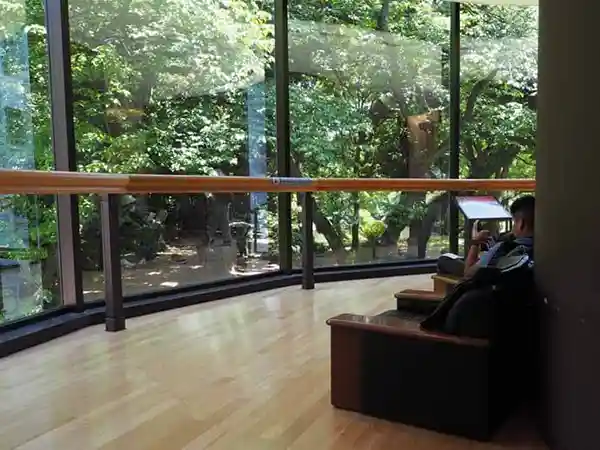
This rest area protrudes into the garden on the north side of Honkan and has a transparent glass wall facing the garden. Visitors can relax on the comfortable sofas and enjoy the view of the garden.
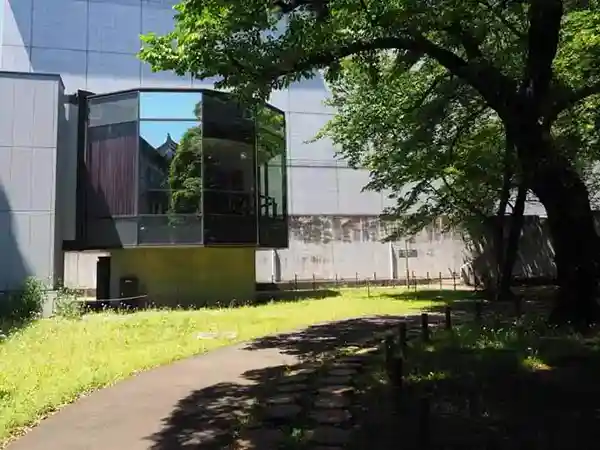
The seats are so pleasing that many people take naps while resting.
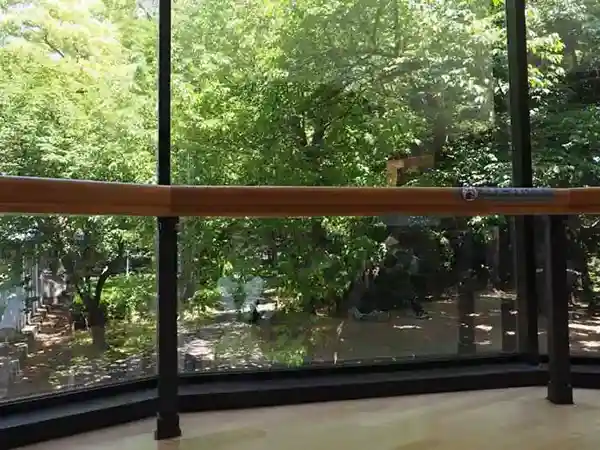
Heiseikan
On the first floor of the Heiseikan, there is an archaeological exhibition room where visitors can see a variety of excavated artifacts from different periods, including the Paleolithic, Jomon, Yayoi, and Kofun periods. These artifacts include clay figures(Haniwa), bronze bells(Douboko), and Haniwa clay figures, among other things I had previously only seen in textbooks.
Sofas Located in Front of the Japanese Archaeology Gallery
Sofas were arranged in front of the archaeological exhibition room, but no visitors were resting on them on this day.
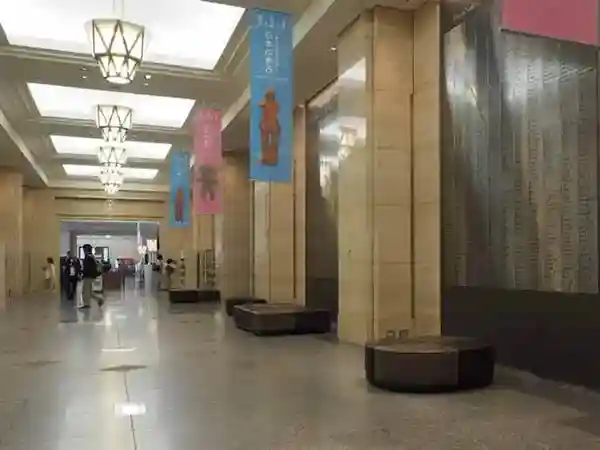
The Gallery of Horyuji Treasures
The Gallery of Horyuji Treasures opened in 1964. This gallery preserves and exhibits the “Horyuji Treasures,” which were generously donated by the Horyuji Temple to the Imperial Household in 1878.
If you enter the main gate and head to the far left, you will find the Gallery of Horyuji Treasures. The Treasure House is located in a secluded part of the museum, which means there are usually fewer visitors, and the atmosphere is quiet.
Benches Located in Front of the pond
Stone benches line the front of the pond in the Gallery of Horyuji Treasures. These benches are surrounded by trees and cooled by the breeze from the pond in front of them.
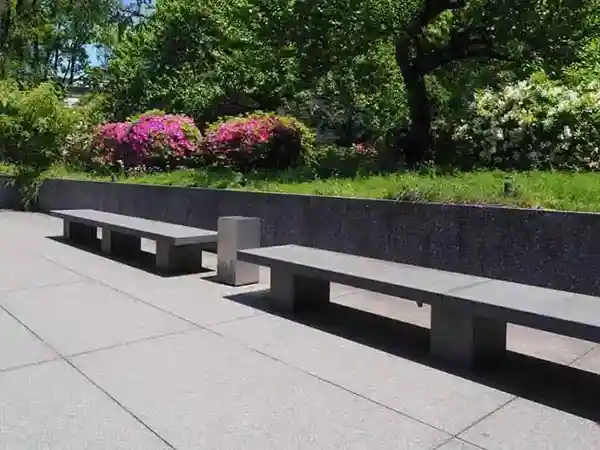
Entrance Hall
On the first floor of the Gallery of Horyuji Treasures, you will find the Entrance Hall, where leather armchairs are arranged at generous intervals. These armchairs were designed by Italian designer Mario Bellini (1935- ).
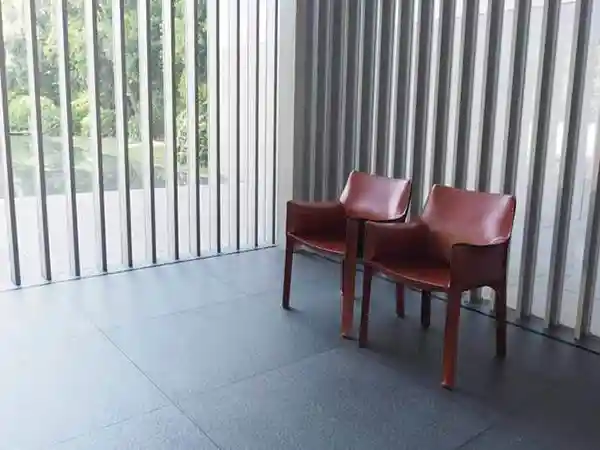
The entrance hall’s walls are made of transparent glass, allowing you to relax in comfortable chairs and take in the views of the pond and trees around the Hyokeikan. Take a seat and enjoy the peaceful atmosphere.
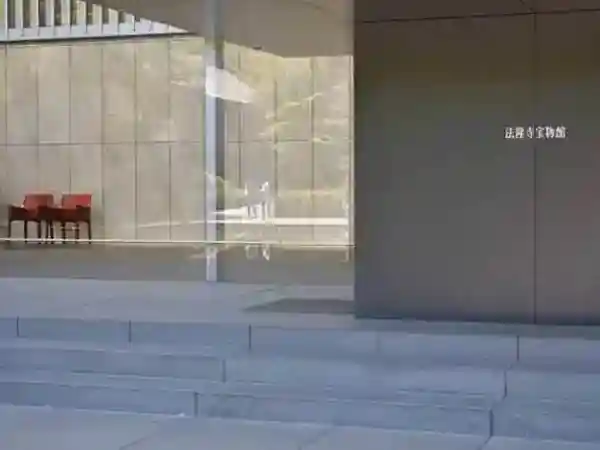
椅子の周りはガラス張りなので、表慶館の周りの池と木々を眺めてくつろげます。
Reference Room
On the mezzanine floor, you will find the reference room equipped with a large table and chairs. This bright room has glass walls and is the perfect place to read books.
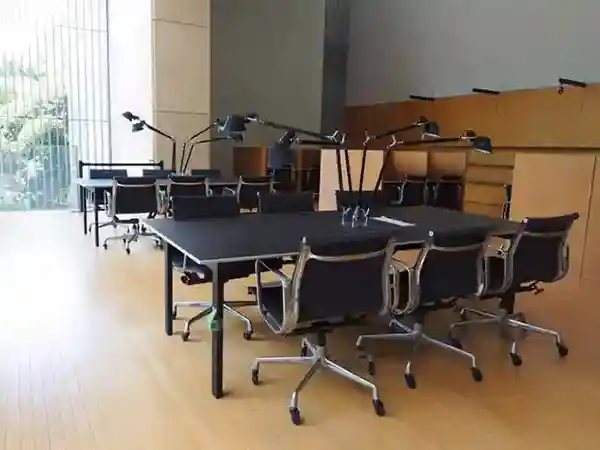
Lounge in the Reference Room
The space to the east of the reference room is furnished with sofas designed by Le Corbusier (1887-1965).
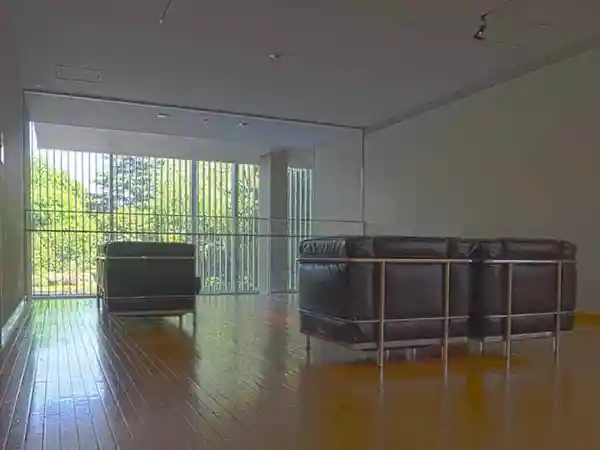
The front of the sofas faces the pond in front of the Treasure House, with a glass wall providing a clear view of the garden. While sitting on the comfortable couches, you can relax and enjoy the peaceful surroundings, immersing yourself in tranquility.
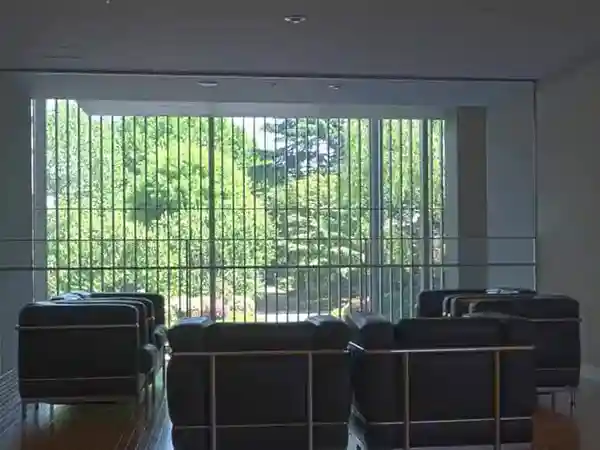
In addition to its extensive exhibitions, the Tokyo National Museum offers a variety of ways to engage with and enjoy the museum. If you can visit Tokyo, we recommend setting aside some time to visit the museum and relax in your favorite part.
